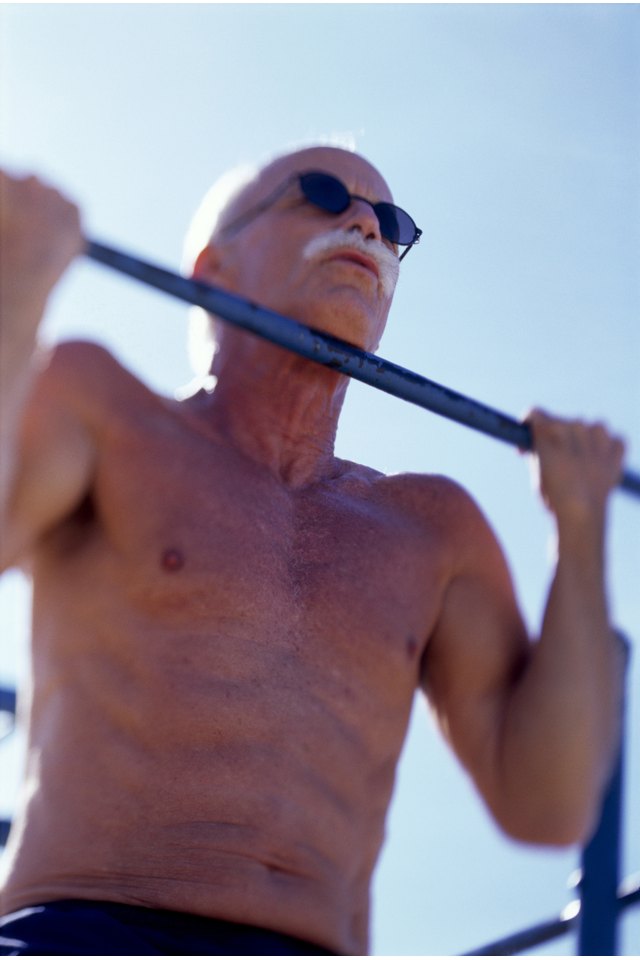What Muscles Does Hanging on a Bar Strengthen?

Organizations such as the President's Challenge and Marines use the bar hang as a test of upper body strength and endurance. Although it's not a typical strength exercise, the bar hang does strengthen muscles in your back and arms. The specific muscles strengthened depends on the type of hang you perform. Because you don't actively move during the bar hang, your training results will be limited to the joint angles maintained during the exercise.
Hang Grip
Regardless of your body position, hanging from a bar works your gripping muscles, which are located on the inside of your forearms. Strengthening your grip by hanging on a bar will help you hold heavier weights for exercises such as deadlifts, when your grip can fatigue before the target muscles. A strong grip is also vital to performing everyday tasks, such as opening a jar, and sports activities.
Flexed-Arm Hang
When performing a flexed-arm hang, your elbows are bent, your legs hang directly beneath your torso, your chest is close to the bar and your chin is above the bar. This is the style of bar hang most commonly used for fitness testing purposes. It works your biceps, back and shoulder muscles. An underhand grip -- when your palms face the ceiling -- engages your biceps more than an overhand grip does.
Straight-Arm Hang
If you hang with your body completely relaxed -- your elbows fully extended and your shoulders lifted toward your ears -- the straight-arm hang primarily targets your gripping muscles. To engage the muscles of your back, pull your shoulder blades together and down. This places your shoulders in a neutral position, pulling them down and away from your ears. Maintain a slight bend in your elbows to focus the tension on the muscles and not in the joints. This style of bar hang mainly engages your back muscles, but also works your arm and shoulder muscles.
Considerations
Hanging on a bar works the muscles through static tension, also called an isometric contraction, which means the muscle contracts without changing length. Isometric training strengthens the muscles at the specific angle of the joint maintained during the training. It does not strengthen the muscle through its full range of motion. Lifters use isometric training to break through sticking points. For example, if you try a pull-up and you find yourself struggling at the point at which your elbows are just wider than a 90-degree angle, practice a bar hang at this angle to strengthen the muscles.
References
Writer Bio
Based in Austin, Texas, Jolie Johnson has been in the fitness industry for over 12 years and has been writing fitness-related articles since 2008 for various websites. She received her Bachelor of Arts in English and philosophy from the University of Illinois.
